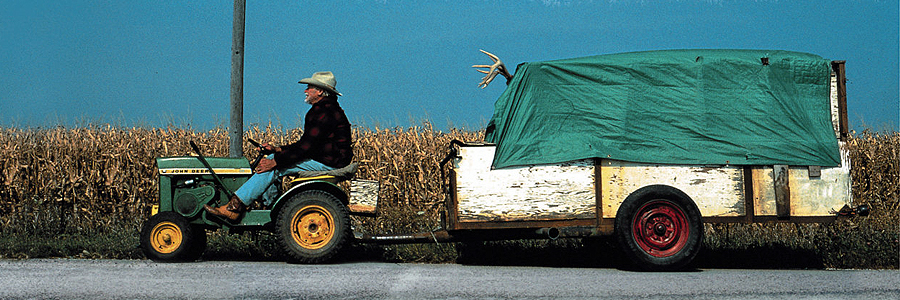
The Straight Story
Walt Disney Pictures
Original release: May 21st, 1999
Running time: 112 minutes
Director: David Lynch
Writers: John E. Roach, Mary Sweeney
Composer: Angelo Badalamenti
Cast: Richard Farnsworth, Sissy Spacek, Harry Dean Stanton
“Uncle Lyle had a….a…..ah…stroke” 00:12:59 to 00:14:23
Deconstructing Cinema: One Scene At A Time, the complete series so far
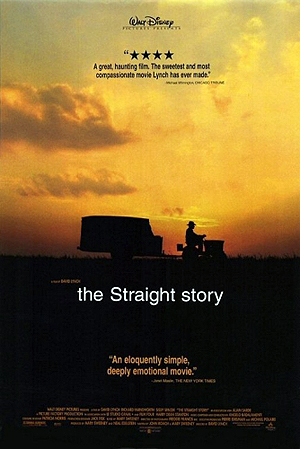
In December 1999 I’d only just turned 21, and like many young adults that age I had no idea what I wanted to do with my life. There was some vague interest in wanting to be an artist or a writer, but in what seemed like the most random choice I could’ve made, I hopped on a plane and moved to Germany for the next few years.
What’s so crazy was that I had no money, no prospects and no connections there, just the kind of blind enthusiasm that comes with youth I suppose. There was no shortage of friends and family telling me how stupid and reckless my decision was, or reminding me that I’d failed German at school. For a poor boy who’d never been anywhere before I just knew it was something I had to do so I got on that plane anyway. My point is, throughout my life so far there’ve always been folks who couldn’t wait to tell me that whatever I was about to do was a mistake, but being the stubborn fool I’ve always been I’ve never listened. Sometimes it works out, sometimes it doesn’t, but I just couldn’t live with myself if I didn’t at least try. My father and his father before him were exactly the same.
I guess it’s all of those things that came to my mind as I watched The Straight Story. It’s based on the true story of Alvin Straight who, at the age of 73, travelled 240 miles on a 1966 John Deere riding lawn mower from Iowa to Wisconsin to visit his 80-year-old brother who’d recently had a stroke. The journey took six weeks to complete in the summer of 1994.
If you’re in any way familiar with Lynch’s previous films like Blue Velvet, Twin Peaks: Fire Walk With Me, Mulholland Drive or Lost Highway, then you might be forgiven for thinking The Straight Story is another surrealist psychological horror. This couldn’t be further from the truth because it’s perhaps his most accessible piece of work. In short, it’s an altogether different kind of road movie, and while watching it I couldn’t help but think it could’ve been about my grandfather, my father or even me a few decades from now, although minus the lawnmower, but maybe I’ll have one by that age.
It’s a warm early September afternoon and we meet Alvin Straight (Richard Farnsworth), a seventy-three year old man who should be meeting up with his friends at the local bar, but instead he’s fallen down at home while his daughter Rose (Sissy Spacek) is out. With no one to help him up he’s just lying on the floor until his friend Bud (Joseph Carpenter) comes looking for him, with next-door neighbour Dorothy (Jane Galloway Heitz) tagging along and franticly asking when she sees him sprawled out on his back “What’s the number for 911?”
In Film Quarterly from fall 2000, Tim Kreider notes that the opening scene begins a lot like Lynch’s other films:
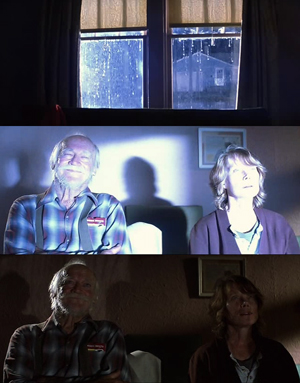
Though Alvin seems fine and insisting to Rose that he “just needs a bit of help getting up”, she takes him to the doctor for a check-up and after being told to remove his clothes he’s rather sternly informed that he’s not in a good condition and needs to make some changes quickly.
Well, this morning you fall and you can’t get off the floor, that’s your hips Alvin and you’re going to have to use a walker now to get around.
ALVIN:
No walker!
DOCTOR:
Fine, then a second cane then. Now you say you’re having trouble seeing, that could be a diabetes related problem. I would like to run a few tests –
ALVIN:
No tests! And I’m not paying for no X-rays.
DOCTOR:
Well, I see and hear that you smoke, well my guess is you’re in the early stages of emphysema, and Alvin, you have circulation problems and I’m worried about your diet. If you don’t make some changes quickly there will be some serious consequences.
The next thing we see is Alvin smoking at home when Rose comes in with yet another bird house she’s made. As she’s asking him about what the doctor said, he replies he’s “gonna live to be a hundred”. Alvin smiles at Rose as he says this and she smiles back, but when he looks away it’s the look of a man who knows he’s coming to the end of his life and hasn’t quite accepted it yet.
Rose, like Alvin, is an interesting character. When we meet them the first time it’s easy to think that everything we need to know about them can be summarised in those few minutes, but as the film progresses we start to see the layers upon layers that make them who they are, just as there are layers to us in real life. Rose has a speech impediment which means that her sentences are always broken by gaps – pauses of silence – which can sometimes make it hard for her to communicate with others. It’s easy to misinterpret what she says and for her to misinterpret what others say to her, as demonstrated in another scene later on at a supermarket regarding who’s having a party.
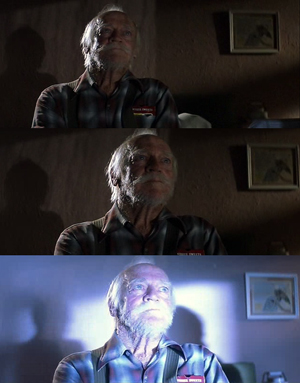
However, it’s the following scene in The Straight Story which acts as the catalyst for the journey Alvin will embark on, and in doing so gives us a chance to ask further questions about these characters, even if Lynch offers us to no definite answers to them. It’s night and there’s a storm raging, we know this because we can see from outside the windows of Alvin and Rose’s house that it’s raining heavily, there’s thunder clapping and lightning streaking across the sky, reflecting on their faces as they watch it with awe. Just then the phone rings and Rose goes to answer it off camera.
Hello………this…….is Rose. Yah…yah…Uncle……Lyle?
We don’t hear the other end of the conversation, the camera lingers on Alvin’s face as it’s him Lynch wants us to focus on instead. We see his expression change as he listens to Rose on the phone, his eyes begin to search his mind for what could be wrong with his estranged brother Lyle (Harry Dean Stanton), he never turns his head or says anything as he continues to react silently to this one-sided conversation.
Oh…….no. When? O.K. Ah..ah…I’ll tell him. Yah. O.K. bye.
Sometimes we just know when there’s bad news, we can sense it before anyone tells us, and it’s like that in this scene as we watch Alvin’s face and eyes. Rose comes back into the room.
That was Bobby…Uncle Lyle had a….a…..ah…stroke.
Dramatically then, on the word “stroke,” a bolt of lightning brilliantly illuminates Alvin’s face as he sits there staring out of the window at the storm. He knows he’ll have to visit his brother, given his age and what the doctor said to him and the fact that Lyle’s now had a stroke, who knows how long either of them might have left, but with Rose not being able to drive him there there’s a problem of how to get from Laurens, Iowa to Mount Zion, Wisconsin. Alvin comes up with an idea that will be contested by his family and friends, but he knows he has to do it – he wouldn’t be able to live with himself if he didn’t at least try.
As he won’t be able to drive there himself by conventional means; his legs and eyes are too impaired for him to have a driving license, Alvin decides to hitch a trailer to his lawnmower and travel the 240 miles to make amends with his brother. Along the way he encounters folks with whom he shares stories of his life with and it’s in these moments we see other sides to him and Rose. We learn about his time in the army, how he feels about growing old when he’s asked worst part of being old, he replies “remembering when you was young” and what family means to him when he tells a hitchhiker that a bundle of sticks that is hard to break, “United we stand; divided we fall”.
Whatever happened between the brothers is not for us to know, what’s important is that we see one of them literally going the distance to make it right, despite ten years passing between them. It reminded me of some of the feuds I’ve had with my own brothers and how I sometimes went months without speaking to them, but then once we made up it was like no time had ever passed. Though it was usually only a short time before we were bickering again. Maybe it’s not the fight that counts, but the making up?
The Straight Story might’ve seemed like a strange choice of film for Lynch to direct, but not really. Having been an admirer of his work since I was 12 years old, starting with Twin Peaks in 1990, I can say he’s truly one of the few storytellers out there who understands something about human nature, relationships and what people can mean to us and he gets these ideas across in a way that always affects me in a way no other filmmaker has ever been able to. And as I watched Richard Farnsworth give the performance of a lifetime, and in what was to be his final role, as he was suffering from terminal bone cancer, I found myself hoping for two things; that it won’t take me as long as Alvin did to reconcile with a loved one, and that I’ll find some way to balance stubbornness and listening to good advice when it’s given.
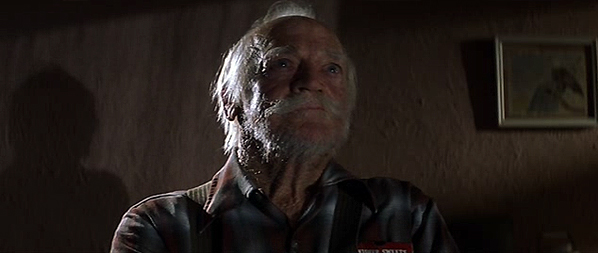

Patrick Samuel
The founder of Static Mass Emporium and one of its Editors in Chief is an emerging artist with a philosophy degree, working primarily with pastels and graphite pencils, but he also enjoys experimenting with water colours, acrylics, glass and oil paints.
Being on the autistic spectrum with Asperger’s Syndrome, he is stimulated by bold, contrasting colours, intricate details, multiple textures, and varying shades of light and dark. Patrick's work extends to sound and video, and when not drawing or painting, he can be found working on projects he shares online with his followers.
Patrick returned to drawing and painting after a prolonged break in December 2016 as part of his daily art therapy, and is now making the transition to being a full-time artist. As a spokesperson for autism awareness, he also gives talks and presentations on the benefits of creative therapy.
Static Mass is where he lives his passion for film and writing about it. A fan of film classics, documentaries and science fiction, Patrick prefers films with an impeccable way of storytelling that reflect on the human condition.
© 2022 STATIC MASS EMPORIUM . All Rights Reserved. Powered by METATEMPUS | creative.timeless.personal. | DISCLAIMER, TERMS & CONDITIONS
HOME | ABOUT | CONTACT | TWITTER | GOOGLE+ | FACEBOOK | TUMBLR | YOUTUBE | RSS FEED
CINEMA REVIEWS | BLU-RAY & DVD | THE EMPORIUM | DOCUMENTARIES | WORLD CINEMA | CULT MOVIES | INDIAN CINEMA | EARLY CINEMA
MOVIE CLASSICS | DECONSTRUCTING CINEMA | SOUNDTRACKS | INTERVIEWS | THE DIRECTOR’S CHAIR | JAPANESE CINEMA





